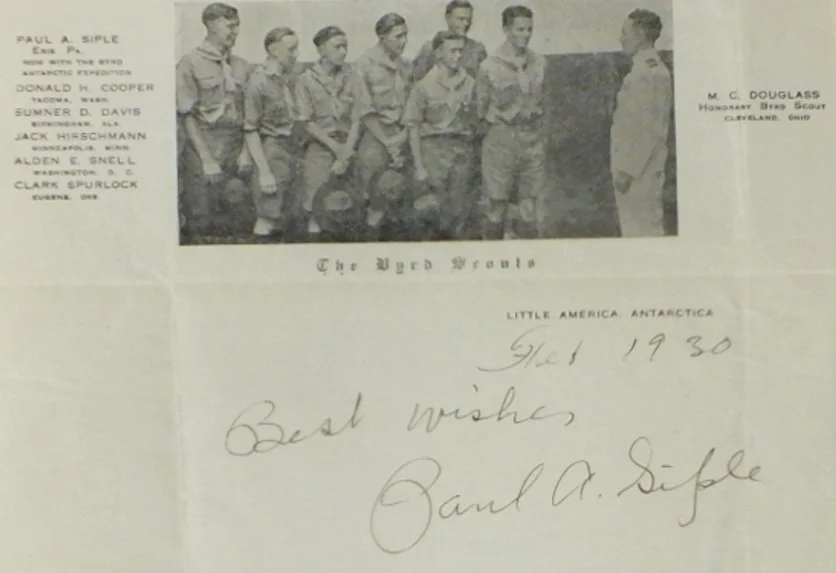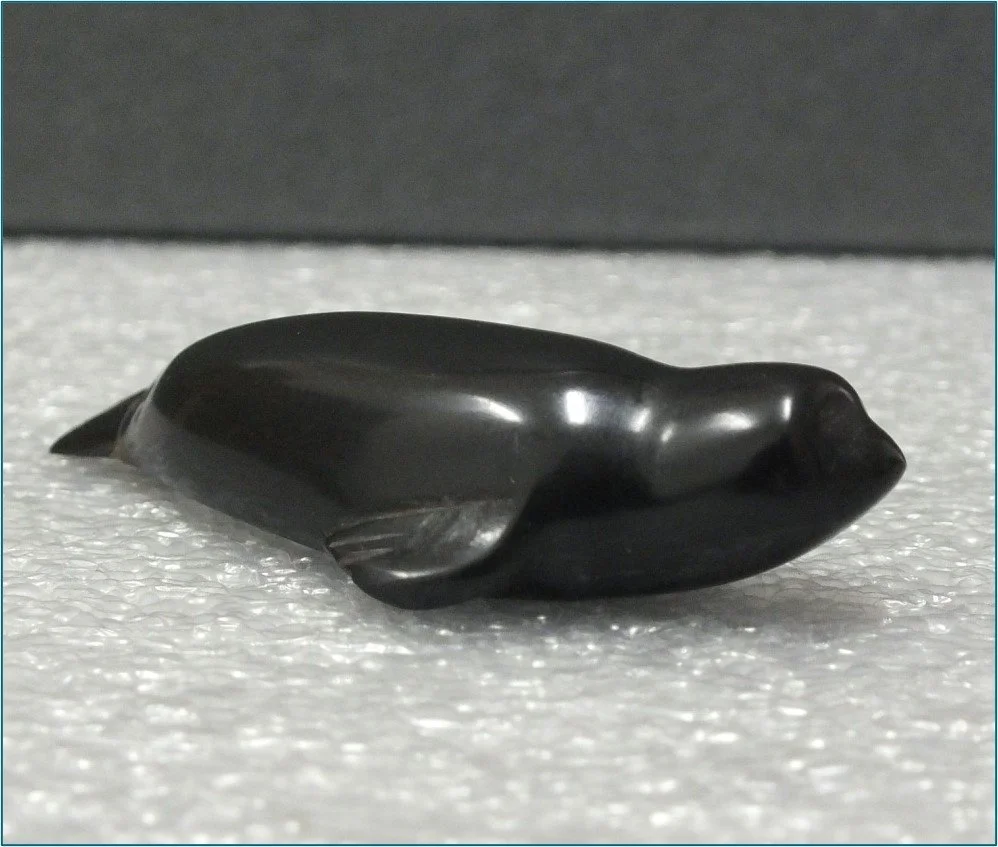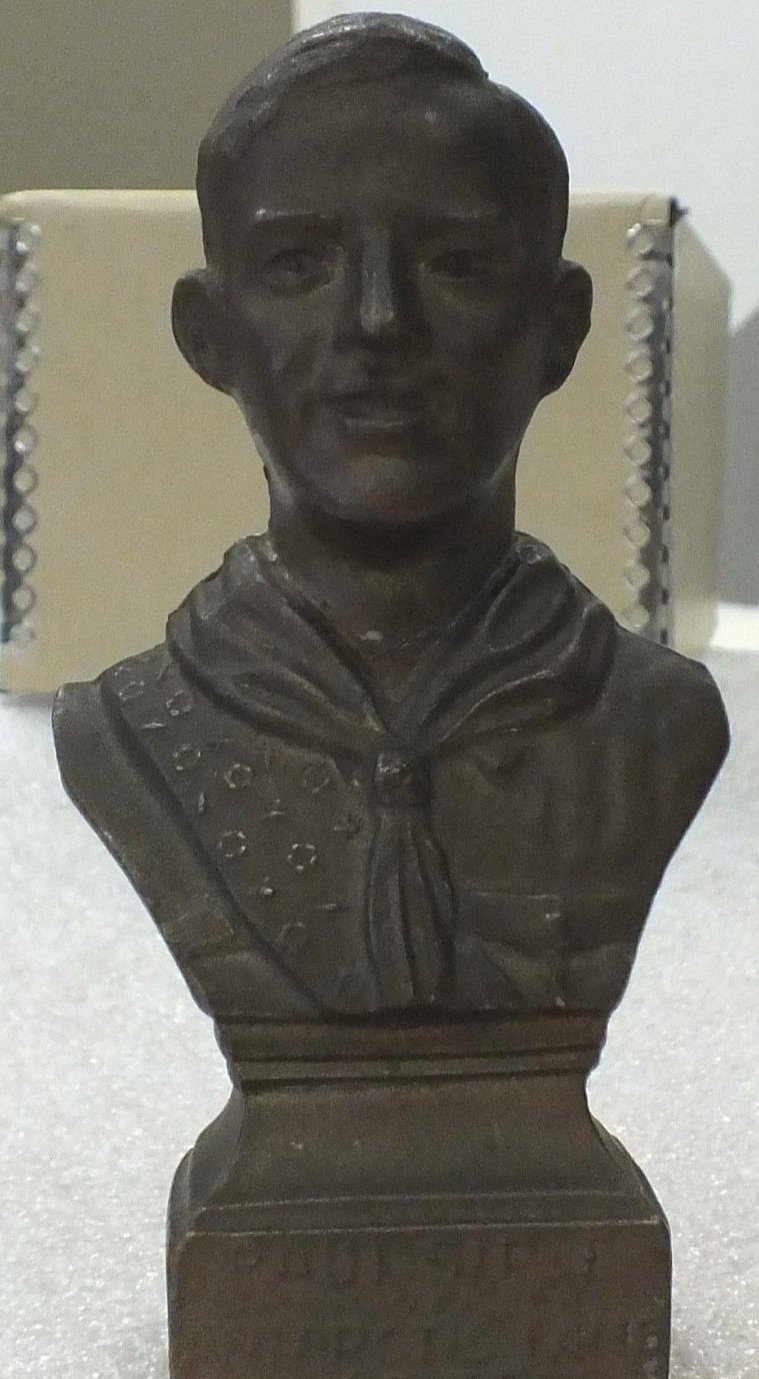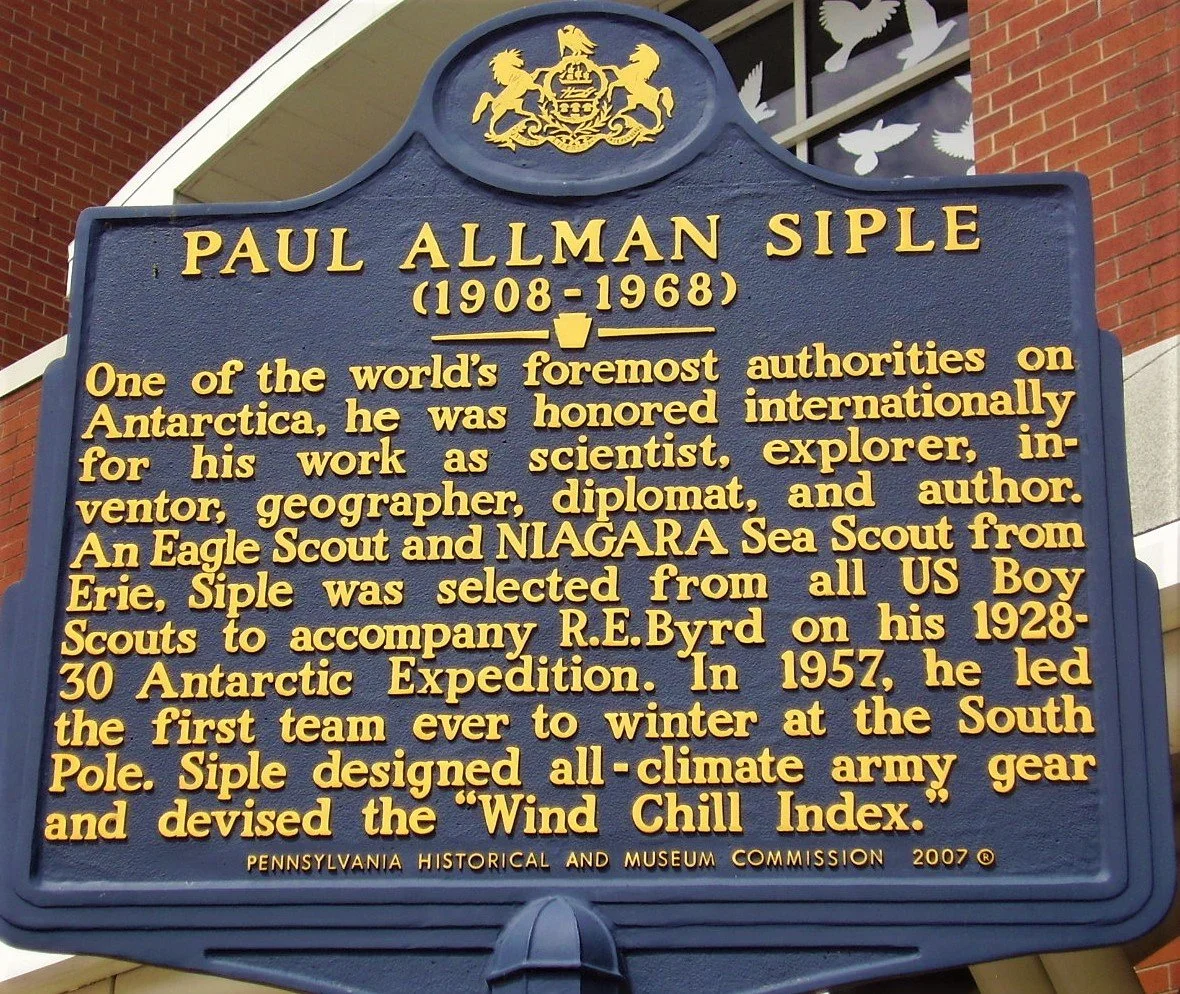Erie’s Antarctic Explorer
Paul Allman Siple | 1908-1968
“He lived in an age which has been very rapidly and continuously out-dated by new technologies. When he came to the Antarctic not even its outline was complete on the map, and when he left it the exploration was almost finished. Siple was deeply involved in the many changes that occurred: from survey by sledge-wheel and compass to the large-scale application of photogrammetry, from the use of sledge dogs to the C130 Hercules modern transport aircraft. He will be greatly missed by a wide circle of friends, not only in the United States but also in many other countries.”
Paul Allman Siple was born in Montpelier, Ohio on December 18th, 1908 to Clyde and Fannie (née Allman) Siple. When Paul was 10 years of age, he and his family made the move to the “Flagship City”. As Patricia Potter Wilson, in her book Eagle on Ice, stated that Paul was “described by his parents, friends, and teachers as a curious, determined, self-motivated boy who thrived on learning about the world around him”. In 1920, Siple joined Boy Scout Troop #24 - a decision that led him on a path to a record number of 59 merit badges and becoming one of the youngest Eagle Scouts ever. Siple credited his time in Erie and association with the Brig Niagara as a firm foundation for his later endeavors. He later recalled that the Flagship Niagara, “stood in our harbor in Erie and we Sea Scouts used it for training” - where he discovered seagoing nomenclature and knots. In 1926, Paul graduated from Erie’s Central High School.
In 1928, Paul was thrust into the spotlight when United States Navy Commander Richard E. Byrd announced his desire to become the first person to fly over the South Pole along with the intention to bring one Scout on this expedition. With this, a nationwide search for scouts commenced and Siple was selected along with five others for the chance to join Byrd on his expedition. The scouts were invited to New York City to meet the Commander. As recounted by Erie Maritime Museum volunteer Linda Bolla, "Paul’s essay and qualifications carried him through the competition…the finalists were all asked one last question -- ‘which two scouts would YOU choose to accompany you if it were possible to send three scouts on the expedition?” Every other finalist named Paul as their first choice.
Paul Siple was preparing to depart Little America when he autographed this letterhead in February of 1930. In true Eagle Scout spirit, Siple shared the spotlight with all the finalists by incorporating their images on his personal stationery.
As depicted in this photograph:
Paul Allman Siple - Erie, PA ; Donald H. Cooper - Tacoma, WA ; Sumner D. Davis - Birmingham, AL ; Jack Hirschmann - Minneapolis, MN ; Alden E. Snell - Washington D.C. ; Clark Spurlock - Eugene, OR ; M.C. Douglass - Cleveland, OH ; Richard E. Byrd
Letterhead | FN2015.1.1 | Donor: Jane Siple DeWitt
Byrd’s first expedition departed New York on August 25, 1928, aboard the wooden-hulled steamer City of New York - which featured a barkentine sailing rig. Drawing on skills developed as a Sea Scout aboard US Brig Niagara, Siple quickly became an instrumental part of the sailing crew, garnering the attention of Byrd and the crew.
Once in Antarctica, the mission’s chief goals included the catch and preparation of a penguin and seal which were to be sent to the American Museum of Natural History. It was here where Siple’s skills were truly put to the test as Byrd assigned the young scout from Erie, PA to handle this critical task. In addition to taxidermy, he practiced and became an expert in dog driving and the essentials of polar climate survival. This first expedition is commemorated in our collections in a print of Paul offering regards to Commander Byrd amid a stunning backdrop highlighting much of the expedition’s scenes: sled dogs trained by Siple, the silhouette of the City of New York, and views of the Antarctic coastline.
Paul Siple Print | FN2006.3.7 | Donor: Jane Siple DeWitt
Byrd’s first expedition concluded on February 19, 1930. Upon his return home, Siple attended and graduated from Allegheny College with a B.S. in Biology and a Minor in Geology in 1932. While home, he authored A Boy Scout with Byrd and Exploring at Home. These two publications helped fund his own explorations of Europe, North Africa, and the Middle East from 1932-33.
A Boy Scout with Byrd | FN2006.14.1 | Jane Siple DeWitt
In 1933, Byrd brought on Siple for a second expedition to the continent, giving him the title of Chief Biologist. In addition to the new title, he was tasked with pooling together all of the required equipment for the trip to establish the Admiral’s “Bolling Advanced Base” - the first inland weather station on the continent. He was also permitted to spend the second summer of the expedition traveling the northwestern portion of the Ford Ranges east of the Ross Ice Shelf to collect lichens and mosses - which led to the discovery of 89 new species. In addition to these groundbreaking discoveries was to take back the first living Emperor Penguins to be viewed outside the Antarctic back to the United States.
While the dates of these carvings are unknown, they represent two of the more beautiful creatures studied by Paul Siple during his expeditions to Antarctica. Both carvings are made of marble and are quite small. The white marble penguin stands upright at just below 2.9” tall x 1.25” wide.
As for the black marble seal, the figure is even smaller, measuring .625” tall x 1.125” wide.
Carvings | FN2016.10.1-2 | Jane Siple DeWitt
Of all of Siple’s trips to Antarctica, perhaps his most well-known was his time as the Scientific Leader at the U.S. Amundsen-Scott South Pole Station of the International Geophysical Year from 1956-57. Siple was featured on the cover of the December 31, 1956 edition of LIFE Magazine which wrote of Siple the following:
No man knows more about surviving at the South Pole than Siple - the obvious man to establish the first year-round colony in the world's deep freeze. As a Sea Scout, he went to the Antarctic 29 years ago with Admiral Richard E. Byrd, has spent four winters there since. As it turned out, Siple's buoyant personality proved as valuable as his scientific knowledge. He ran a surprisingly contented camp despite the little group's isolation, and the wearing, jet-black night of winter that was four months long. Siple's formula: work like hell most of the time; be pleasant to everyone all of the time.
Time Magazine, 1956 | FN2016.10.1-2 | Jane Siple DeWitt
“One reason for the normal life lived down there was that everyone was kept very, very busy, so much so that a few sometimes complained that there was too much to do and not enough leisure.””
Siple Bust| FN2016.10.1-2 | Jane Siple DeWitt
On November 25, 1968, Siple passed away from a heart attack at his desk in Arlington, Virginia - three years after a stroke in New Zealand. As recorded by Paulette Dininny, “obituaries published throughout the world praised his many scientific achievements but never failed to note his extraordinary leadership qualities, unfailing courage, and generous human spirit”. This bust celebrates the achievements of Paul Siple, the Eagle Scout who accompanied Commander Richard E. Byrd on his first Antarctic Expedition, 1928-30. Here, he is depicted in his Boy Scout uniform and wearing his merit badge sash.
In 2007, the Commonwealth of Pennsylvania commemorated “one of the world’s foremost authorities on Antarctica”, Paul Siple for his achievements in science, exploration, geography, and writing. Visitors to the Maritime Museum are able to view this PA Historic Marker outside the main entrance to the museum.
In addition to this, his legacy remains to this day. Places like the Siple Coast, Siple Island, Mount Siple, Siple Ridge, and Siple Station have been named in his honor.
You can read more about Erie’s Polar Man in the following readings:
90 Degrees South by Paul Allman Siple
A Boy Scout with Byrd by Paul Allman Siple
Eagle on Ice by Patricia Potter Wilson and Roger Leslie
Exploring at Home by Paul Allman Siple
From Erie to Antarctica by Paulette Dininny













